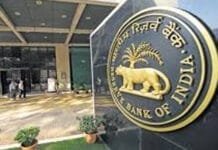INVC NEWS
New Delhi – As we navigate through 2024, India’s economic landscape is witnessing a significant shift, characterized by a robust increase in private investment. This trend is largely driven by heightened expectations surrounding business growth, alongside a notable rise in consumption demand, especially during the festive season. According to the latest RBI bulletin, these dynamics indicate that the nation’s growth trajectory is being effectively supported by a resilient domestic engine.
Understanding the Growth Scenario
The article titled “State of the Economy” in the RBI Bulletin highlights that while there was a temporary slowdown in the second quarter of 2024-25, the overall demand within the country is well-positioned to bounce back. This resilience can be attributed to a surge in festive demand and a marked improvement in consumer confidence.
The festive season, a critical time for consumer spending in India, has historically served as a barometer for the economy’s health. This year is no exception; with increasing disposable incomes and a positive outlook on economic recovery, households are expected to significantly contribute to retail sales during this period.
Rural Demand: A Bright Spot
In addition to urban consumption, the rural economy is also poised for an upswing. Improvements in the agricultural sector—driven by favorable monsoons and government initiatives—are set to enhance rural income levels. This revitalization of rural demand will serve as a catalyst for broader economic growth, fostering an environment conducive to increased investment.
Private Investment: Signs of Recovery
The RBI bulletin underscores the correlation between rising consumption demand and the acceleration of private investment. As expectations about business conditions improve, we can anticipate a surge in private sector engagement across various industries. A strong financial sector, equipped with adequate resources, is now more than ready to invest, further amplifying this trend.
Government Initiatives and Capital Expenditure
The Indian government has been proactive in creating a favorable investment climate. By consistently emphasizing capital expenditure, the government is not only laying down the infrastructure needed for growth but also signaling to the private sector that it is committed to fostering an environment ripe for investment. This strategic focus on capital outlays enhances the overall investment outlook, instilling confidence among investors.
The Impact of Monetary Policy on Investment
The recent economic landscape has also been shaped by the Reserve Bank of India’s (RBI) monetary policy actions. A thorough analysis by RBI Deputy Governor Michael Debabrata Patra reveals that while the global economy remained strong in the first half of 2024, domestic inflation dynamics have significantly influenced consumer spending patterns.
Inflation Trends and Policy Responses
RBI’s decision to implement a total increase of 2.5 percent in the key policy rate since May 2022 has played a crucial role in stabilizing inflation, which has been reduced to 1.60 percent. This control over inflation has subsequently fostered a conducive environment for aggregate demand, yielding disinflationary reactions that are essential for sustaining economic momentum.
Interestingly, despite the global trend of central banks cutting policy interest rates, the RBI has maintained its stance on controlling inflation without altering the repo rate for an extended period. This careful approach is underscored by RBI Governor Shaktikanta Das, who emphasizes that the primary focus remains on curbing inflationary pressures.
Consumer Sentiment and Retail Inflation
As we delve deeper into the current economic scenario, the retail inflation rate has emerged as a critical variable. In September 2024, the retail inflation rate increased to 5.49 percent on an annual basis, a notable rise from the 3.65 percent recorded in August—the lowest in five years. This uptick can be primarily attributed to rising food prices, a key component of the consumer price index.
While such inflationary trends pose challenges, they also underscore the importance of monitoring consumer sentiment. A well-informed consumer base, cognizant of pricing trends and economic conditions, tends to adjust its spending patterns accordingly, which can significantly influence overall economic activity.
The Path Forward: Navigating Economic Challenges
Looking ahead, the convergence of private investment growth, enhanced consumer confidence, and government support for capital expenditure paints a promising picture for the Indian economy. However, it is imperative for stakeholders—government bodies, businesses, and financial institutions—to collaboratively navigate potential economic challenges that may arise from inflationary pressures.
The forthcoming months will be pivotal in determining whether India can sustain its growth trajectory. A keen focus on maintaining stability in key economic indicators, coupled with strategic investment in critical sectors, will be essential for ensuring long-term economic prosperity.













